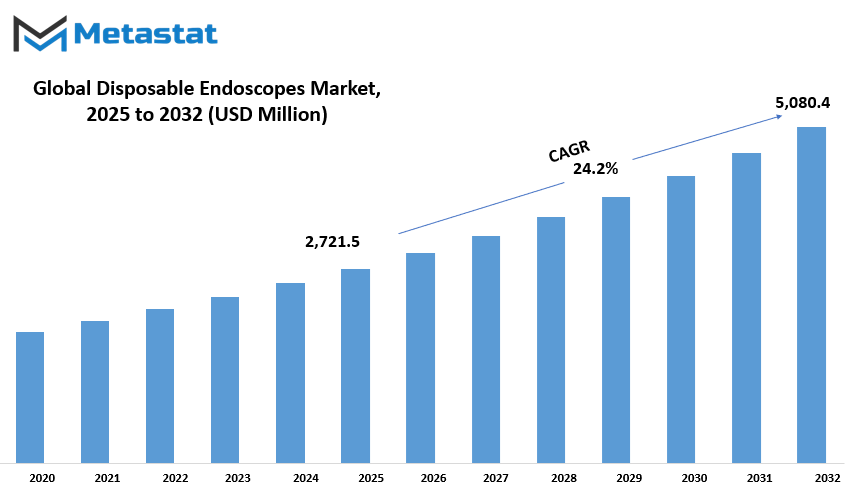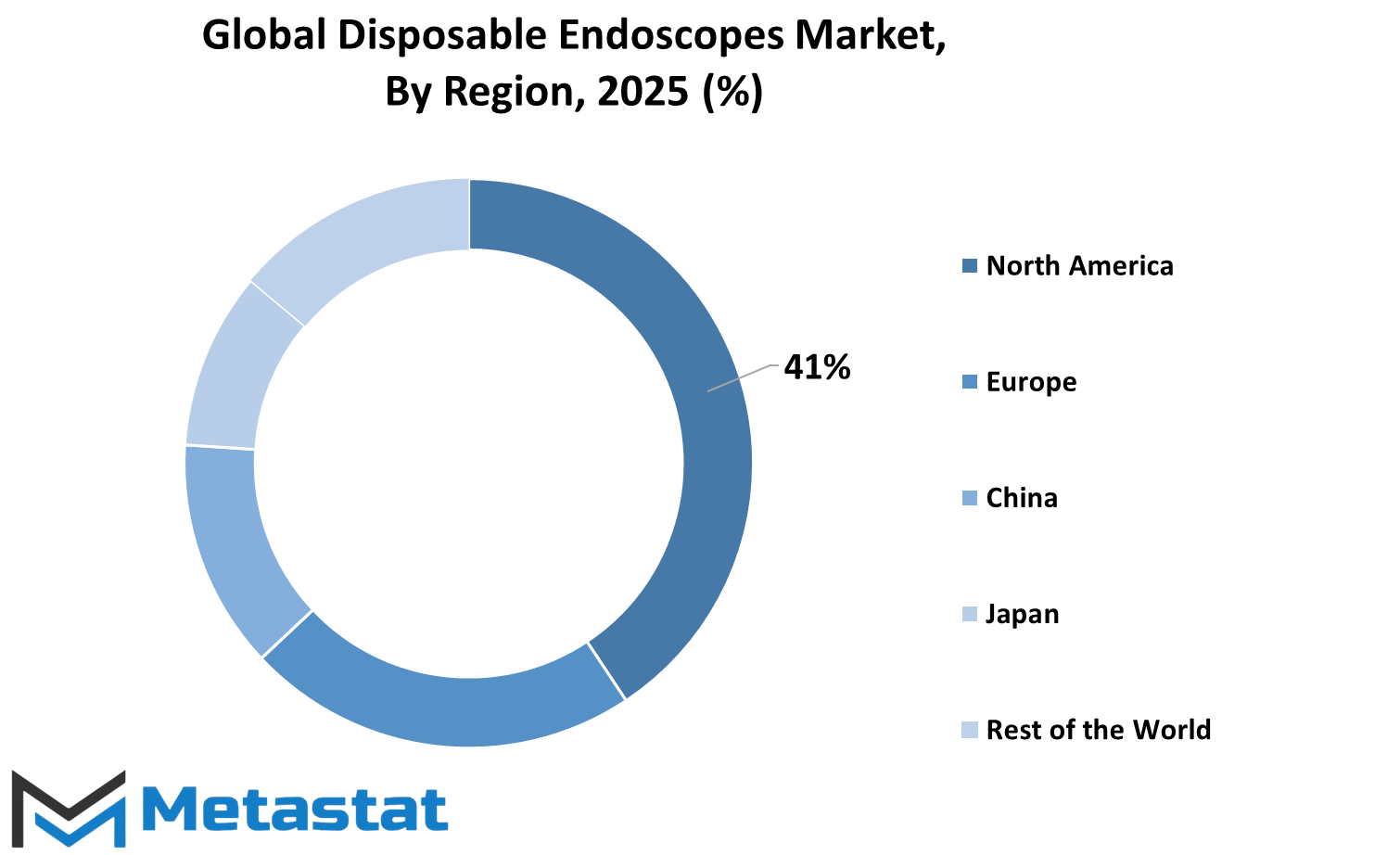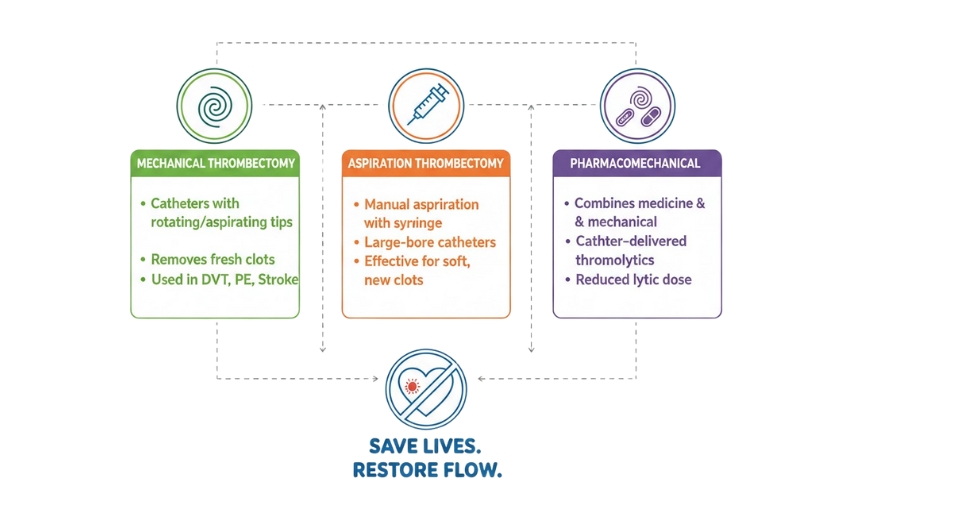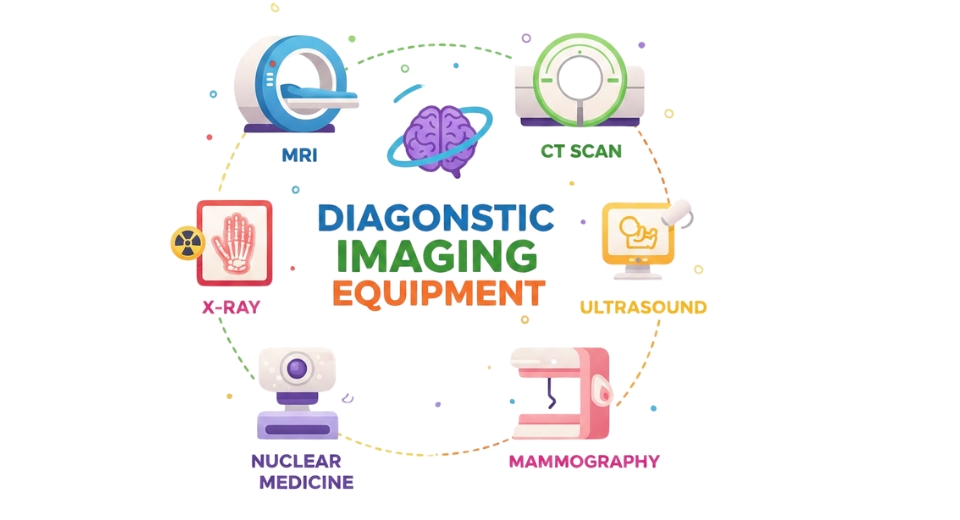MARKET OVERVIEW
The Global Disposable Endoscopes market is situated between the innovative, technically advanced healthcare house and the safe, efficient, and effective patient care that has the potential to redefine traditional approaches in diagnosis and practice. This sector is slowly moving into areas beyond its traditional confines, paving the way for enabling even more exciting potential applications beyond hospital operating rooms and diagnostic areas. As the healthcare industry develops processes to meet serious new demands such as those related to cross-contamination, procedural efficiencies, and patient throughput, the Global Disposable Endoscopes market will shift according to wholly new strategies and alternative uses that may not yet have been envisioned.
In fact, one of the fronts that will be configured for expansion in the market will actually involve applications outside of the core clinical environment. Portable and disaster relief medical and remote health care delivery will actually be facilitated with discrete endoscopic devices because of their ready-to-use designs and easy transportability. The devices will connect critical missing links in areas with little or no sterilization infrastructure or skilled technicians. The Global Disposable Endoscopes market ultimately will determine whether field-based diagnostics and treatments take place expeditiously and without risk, thereby redefining emergency health care logistics in under-provisioned territories.
Another expansion of the market will come in the direction of animals and non-human applications. In fact, as these single-use endoscopy solutions come into vogue, the large agribusinesses, zoos, and pet health providers searching for safer yet more efficient diagnostic modalities might value the benefits these single-use endoscopy solutions offer. Their use and adaptability to all sorts of anatomical adjustments would put the Global Disposable Endoscopes market in the category of resource, non-restricted by species or setting.
Research institutions will also take disposable endoscopes as contenders for such experimental conditions, efficient as they would be in high-throughput studies devoid of the encumbrance of equipment maintenance, unlike the reusable models that incorporate contamination worries, which may affect the data. This shift will spur a new wave of research, clinical and non-clinical, that will require precision but maintain sterile integrity. Thus, the Global Disposable Endoscopes market will silently build innovation in pharmacological experiments, experimental surgeries, and biotechnology development processes.
Even in places like medical education that may definitely involve hands-on training with risks, disposable endoscopes shall be incorporated into the learning modules. These will perform real-time guided procedures in a safe environment, reducing the risk of crashing patients or equipment, which contrarily redefine clinical instruction perspectives. That will be the market driver for the futuristic generation of health professionals in delivering better and safer learning environments.
Global Disposable Endoscopes market is estimated to reach $5,080.4 Million by 2032; growing at a CAGR of 24.2% from 2025 to 2032.

GROWTH FACTORS
The Global Disposable Endoscopes market is steadily making its way forward on a very high note, to amount in sky-high sales revenue ever due to rising issues concerning risk-cross contamination and healthcare-associated infections. Such scenarios have made it imperative for healthcare providers to urgently seek alternative means that make sterilization simplified or rather eliminate the risk of contamination. Across commercial lines, disposable endoscopes emerge as a practical solution: Intended for single use, this equipment obviates the need for reprocessing, thereby reducing transmission potential while easing hospital operations with respective resource and time requirements for cleaning and maintenance.
Yet another aspect that factors the eventuality of market growth opportunity includes the increasing improvements in materials and manufacturing technologies, which now allow the production of disposable endoscopes capable of functioning at par with reusable models. With the improvements in image quality, flexibility, and much greater reliability, even more health care professions are now being made comfortable with the transition from reusable to single-use versions. This is particularly rate in the health institution that focuses on not only safety but also operational efficiencies, where infection-related risks are of utmost priority. Lastly, such changes are coupled with the downsides as discussed.
The market has many encouraging trends yet challenges still abound. Chief among these is the increased cost per procedure of using disposable endoscopes. Disposable ones save time and virtually eliminate sterilization, which naturally leads to costs that can be high with repeated usage. This situation puts quite an economic burden on most healthcare institutions that are often non-profit or located in poor areas. Thus, the adoption of disposable endoscopes in other areas of the world, especially where cost is a serious disincentive, may be lagging far behind.
Currently, the variety of models for disposable endoscopes is a constraint as well. Although most of them are intended for the general procedures, there are not enough of them that are able to adjust to the more specialized clinical preferences. Hence, it becomes quite difficult for certain types of doctors to depend entirely on disposable devices, especially with intricate procedures or particular groups of patients. Until more alternatives are formulated, there could be an incomplete realization of the potential of these products across all fields of medicine.
The market for single-use endoscopes has a bright future despite such challenges. The potential is high in outpatient clinics and surgery centers, as well as in remote areas where sterilization equipment is not available. The very convenience and safety of use will make disposable endoscopes an ideal choice in such locations. With increasing demand and the enhancement of technology, this market is bound to spread further into the global healthcare system's various worlds.
MARKET SEGMENTATION
By Type
There is a strong growth seen in the Global Disposable Endoscopes market due to an increasing demand for safer and cost-effective medical procedures with a growing concern about cross-contamination in hospitals. These are endoscopes which are meant for one-use only. Deployment of disposable endoscopes significantly reduces the risks of infections which otherwise ruptures in the case of a reusable instrument but not being cleaned thoroughly. An increased awareness of disposable endoscopes amongst both healthcare providers and patients has made them a preferable choice when doing emergency or infectious disease procedures. Hospitals and clinics also find them more convenient since they eliminate the need for complex sterilization, take time, and cut on maintenance.
The disposable endoscopes market can also be classified into different segments based on their usage. There is a considerable amount of share for laparoscopes, which is about $542.2 million. These instruments are mostly used during minimally invasive surgeries of the abdomen and pelvis. Laparoscopic instruments allows a surgeon to perform surgeries through small incisions, causing faster recovery and fewer complications to the patient. Arthroscopes form a major part of this category since they are mainly used in joint surgeries in assisting physicians in viewing and treating problems inside the joints like the knee or shoulder. Most ureteroscopes and cystoscopes are categorized under urology as these are used for detection and treatment purposes due to conditions affecting the urinary system.
Gynecology endoscopes are used in the examination of female reproductive organs, and the rise in the number of gynecological procedures has increased the market for these procedures. Neuroendoscopes are used during brain surgery, allowing for more precision and safety in surgeries. They are very important in diagnosing and treating diseases related to the lungs, while hysteroscopes are inspection instruments for the uterus. Laryngoscopes are helpful in seeing the larynx and are usually prescribed in intubation or throat surgeries. There are other types, which also play their part in special treatments.
The increasing acceptance of these instruments among the different segments of the medical profession is also defining the market. Advances in design and technology have made disposable endoscopy more reliable with clear visuals and easy handling. Many manufacturers focus on innovation while keeping their costs low to serve both developed and developing countrys hospitals. As more and more healthcare providers adopt these devices for their practicality and safety, the market is projected to continue to grow. This has the advantage of not only patient care but also hospital management becoming more effective.
By Patient Type
The Global Disposable Endoscopes market has been segmented into Adult and Pediatric patients, which is the primary classification with respect to patient type. This segmentation aids in understanding their unique requirements as regards medically meeting the disposable endoscope methods in a clinical setting. An adult patient is most likely to undergo a procedure with disposable endoscope allowing internal imaging without reprocessing or sterilization. Valuable in situations where time for resources and infection control is essential, for instance, in the emergency departments, out-patient departments, and diagnostic procedures. Several endoscopic interventions are applied to adults concerning various conditions involving the GIT, the respiratory system, and the urinary tract. These disposables would be quick and hygienic solutions, almost eliminating the risk associated with cross-contamination and nosocomial infections.
Endoscopy of children is not increasingly common yet, but the sensitivity of single-use, safe, and effective instrumentation for these patients is magnified. The reason is that children are more vulnerable to infections and may need particular devices adapted to their smaller anatomical structures. Pediatric endoscopes, in general, are made with an eye to flexibility and size, which means less invasive procedures and better comfort for the young patient. The growing uptake of disposable devices in this area can also be attributed to an increase in services for pediatric healthcare and a growing awareness of the medical needs of children.
Both adult and pediatric segments contribute to the growth of the disposable endoscopes market as they opt increasingly for diagnostic tools that are safer, quicker, and more convenient to use. Disposable endoscopes alter the pattern of cleaning and maintenance costs across hospitals and improve the workflow. Technological advancements that are thus in favor of slashing costs of such devices while bringing reliability to them add to this drift towards single-use equipment. As the trend towards patient safety and decreased infections would only continue to grow, there would be greater demand for disposable endoscopes among both the adult and pediatric categories in the future. As hospitals and clinics continue to protect hygiene and patient care, disposable endoscope market requirements by patient type will continue to grow deeper in future years.
By End-use
Demand for safer, more hygienic, and cost-effective tools is fueling the global market expansion of disposable endoscopes. The most common usage of disposable endoscopes is in procedures that do not require the sterilization process, cut down cross-contamination, and save the time of medical professionals. Furthermore, advanced technology and the advancement of healthcare services have turned several hospitals and medical centers into disposable tools with the intention of providing better patient care and lower chances of infections. This switch is quite important in the now-established healthcare systems that are concentrated more on cleanliness, efficiency, and safety of the patients.
By the end use, the market segments into hospitals, outpatient facilities, and the rest. Disposable endoscopes are mostly used in hospitals as they are institutions usually dealing with numerous procedures in a day, thus having single-use devices becoming a more practical option. As there are many concerns nowadays regarding the rising occurrence of hospital-acquired infections and the costs attributed to maintaining reusable equipment, disposable endoscopes are mostly embraced because they are seen as safer and cost-effective by hospitals. Besides, they also allow much more rapid turnover of patients in very busy hospitals and ease the burden on sterilization departments.
Although outpatient centers are showing good growth in their use of disposable endoscopes, they are basically focused on those procedures that can be done without requiring patients to stay in hospital for a longer duration. Thus, these centers usually cater to the fast turnover of patients with minimal downtime. Because the cost-effective nature of disposable endoscopes means they are available for immediate use without requiring additional washing or storage time, they enable fast-paced outpatient care. The single-use devices in such settings also reduce the chances of infection, which is a great priority for both patients and healthcare workers.
Others include smaller clinics, diagnostic centers, and sometimes emergency-care units. Though these may not have as many procedures as those done in a hospital or outpatient setting, they still benefit from the convenience and safety that are offered with a disposable endoscope. For smaller facilities that have very few hands and very little machinery, a one-time-use tool then thrown away is a feasible choice which proves to be pragmatic in the end.
Healthcare keeps improving and growing, so it would be likely for disposable endoscopes to spread widely throughout all types of medical facilities. This is because they fundamentally streamline the workflow, save cost, and improve hygiene-not just for patients but also for the healthcare providers.
|
Forecast Period |
2025-2032 |
|
Market Size in 2025 |
$2,721.5 million |
|
Market Size by 2032 |
$5,080.4 Million |
|
Growth Rate from 2025 to 2032 |
24.2% |
|
Base Year |
2024 |
|
Regions Covered |
North America, Europe, Asia-Pacific, South America, Middle East & Africa |
REGIONAL ANALYSIS
This Global Disposable Endoscopes market is favorable across North America, Europe, Asia Pacific, South America, and the Middle East & Africa because it encompasses regions whose respective peculiarities have considerable importance to the advancement of this market. North America, as another major region, is further subdivided into the United States, Canada, and Mexico. Of these, the U.S. market is rather strong in offering advanced healthcare systems and people being highly aware of minimally invasive procedures. The other two countries, Canada and Mexico, aid their market to some extent but nothing compared to the U.S.
In Europe, the UK, Germany, France, Italy, and the Rest of Europe are grouped into the European market. This region's front-runners are Germany and the UK, chiefly due to their developed healthcare infrastructures and heavy investments into medical technologies. Steady demand for disposable endoscopes in France and Italy is growing due to concerns over infection control and hospital-acquired infections. Other parts of Europe are developing into the market, but at a sluggish pace under increasing government support and larger budgets made available for healthcare.
Asia-Pacific consists of India, China, Japan, South Korea, and other regions in Asia-Pacific. This region is growing at a fast pace, with countries such as China and India having a strong potential with a huge population and developing healthcare services. Japan and South Korea are relatively matured markets with high technology adoption and patient care in this region. The other part of Asia-Pacific is improving its market gradually as awareness is growing, and healthcare becomes accessible.
The South American market is feeding the interest in disposable endoscopes and comprises Brazil, Argentina, and the rest of South America. Brazil is the major contributor to the region owing to the need for cost-effective solution disposal and better methods of infection control. The set path is also followed in Argentina but with much less effort. Other South American countries are starting to explore the advantages of these medical devices.
Lastly, in the Middle East and Africa, we find GCC Countries, Egypt, South Africa, and the rest of the Middle East and Africa. In the GCC Countries, mainly Saudi Arabia and UAE, the growing government investment in healthcare is helping to develop this market. Egypt and South Africa are also on the way to improving their medical infrastructure, which will open new opportunities for disposable endoscopes. Others in this region move slowly, with an increasing awareness of healthcare.

COMPETITIVE PLAYERS
The Global Disposable Endoscopes market is on the rise owing to an increased demand for safer and more convenient procedures. Such single-use devices reduce cross-contamination risks, making them an increasingly popular choice in modern healthcare. Hospitals and clinics are moving towards disposable endoscopes because they do not use intensive cleaning and sterilization procedures as reusable scopes do. Not only does this save time and money, but it also lowers the odds of infections, especially science high-risk interventions toward which most healthcare professionals tend to lean. The Common Use today across most streams of healthcare is disposable endoscopes.
The top key players for Disposable Endoscopes industry are : Ambu A/S; Boston Scientific Corporation; obp Surgical Corporation; COOPERSURGICAL, INC; Flexicare medical Limited; Welch Allyn (Hill Rom); HOYA Corporation (Pentex); KARL STORZ; Olympus Corporation; OTU Medical; Verathon Inc.; Scoutcam; BPL Medical Technologies; Parburch Medical Developments Ltd; Richard Wolf Gmbh; Shenzhen HugeMed Medical Technical Development Co., Ltd.; Tonglu General Factory of Medical Optical Instruments. Companies, on the regular basis, are working to advance the design, performance, and affordability of disposable endoscopes to match the standards required from healthcare systems worldwide.
Technological advances are also set to play quite a big role in shaping the future of this market. The modern disposable endoscopes are being designed in a quality image with a more flexible approach to produce more accurate diagnoses and therapeutics. With more patient safety and faster recovery time aspects being catered towards disposable endoscopes may soon become much more commonplace. In addition, growing cognizance regarding Hospital-Acquired Infections is pushing both private and public sectors of healthcare toward cleaner and more reliable solutions, which is further propelling market growth.
They have also motivated these transitions through guidelines and support for safer medical tools. As surgeries and diagnostic procedures keep increasing, the demand for efficient and low-risk tools like disposable endoscopes will also increase. If physicians and healthcare facilities back this along with the would-be support from key industry players, the disposable endoscopes market will continue to expand steadily over the years. This would also contribute towards what is a common purpose in ensuring better patient outcomes while relieving constraints on healthcare systems.
Disposable Endoscopes Market Key Segments:
By Type
- Laparoscopes
- Arthroscopes
- Ureteroscopes
- Cystoscopes
- Gynecology Endoscopes
- Neuroendoscopes
- Bronchoscopes
- Hysteroscopes
- Laryngoscopes
- Others
By Patient Type
- Adult
- Pediatric
By End-use
- Hospitals
- Outpatient Facilities
- Others
Key Global Disposable Endoscopes Industry Players
- Ambu A/S
- Boston Scientific Corporation
- obp Surgical Corporation
- COOPERSURGICAL, INC.
- Flexicare medical Limited
- Welch Allyn (Hill Rom)
- HOYA Corporation (Pentex)
- KARL STORZ
- Olympus Corporation
- OTU Medical
- Verathon Inc.
- Scoutcam
- BPL Medical Technologies
- Parburch Medical Developments Ltd
- Richard Wolf GmbH
- Shenzhen HugeMed Medical Technical Development Co., Ltd.
- Tonglu General Factory of Medical Optical Instruments
WHAT REPORT PROVIDES
- Full in-depth analysis of the parent Industry
- Important changes in market and its dynamics
- Segmentation details of the market
- Former, on-going, and projected market analysis in terms of volume and value
- Assessment of niche industry developments
- Market share analysis
- Key strategies of major players
- Emerging segments and regional growth potential








 US: +1 3023308252
US: +1 3023308252






